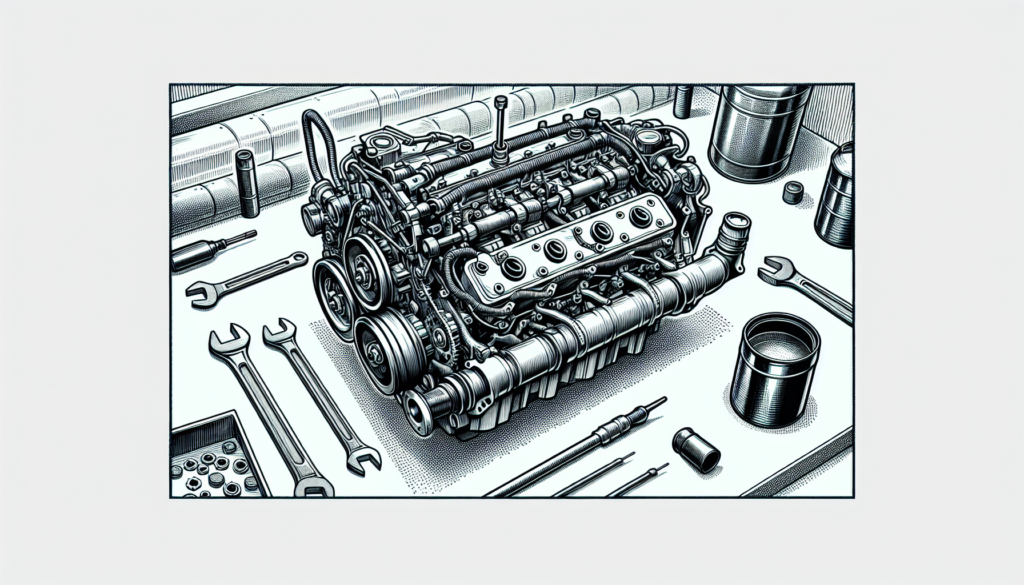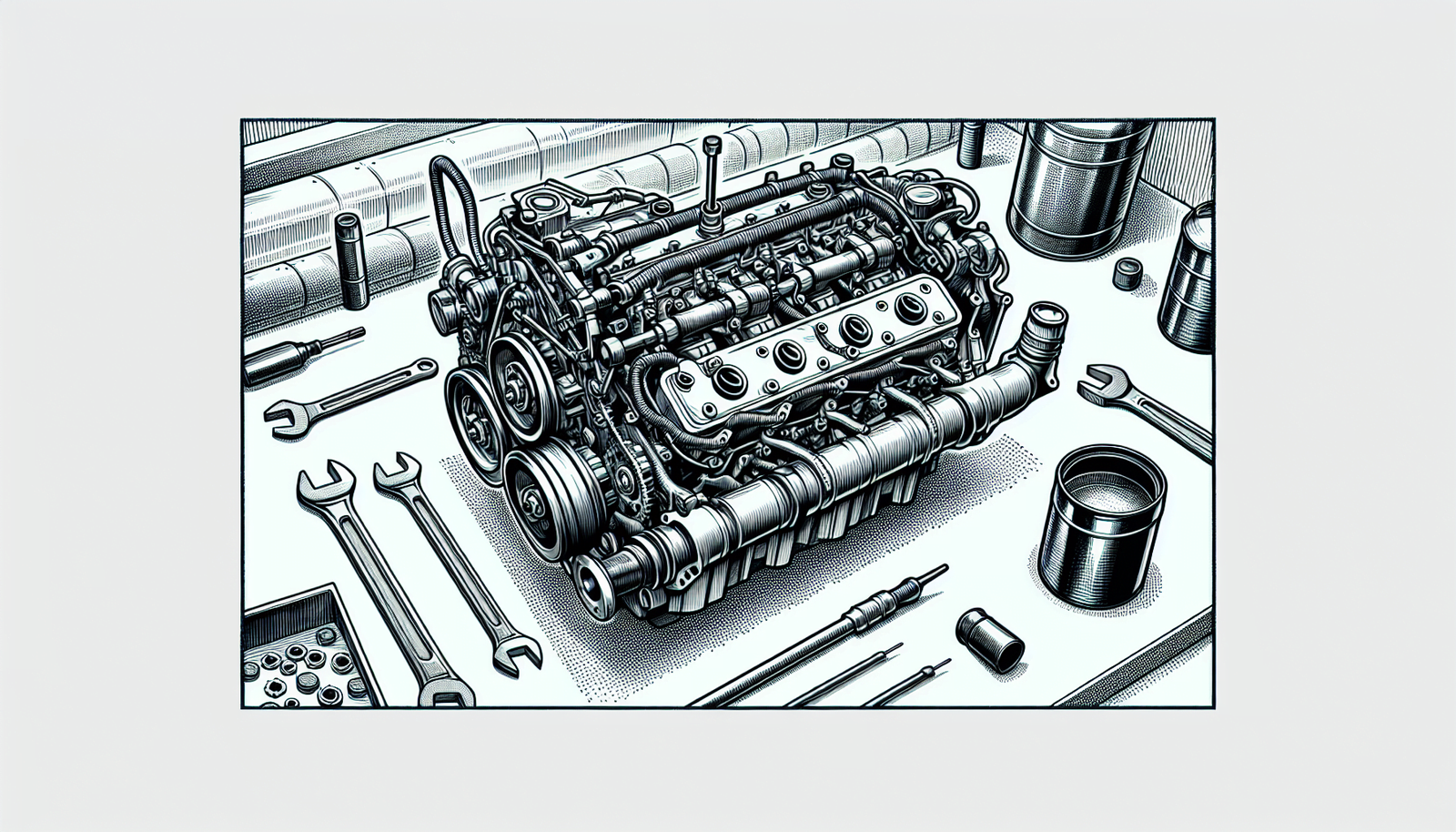Ready to show your boat some good old TLC? In this article, “Quick and Easy Engine Flush for Your Boat”, you’ll find a step-by-step guide on how to properly clean your boat’s powerhouse. From tools needed, to some valuable tips, you’ll learn how a little maintenance can go a long way in prolonging your boat’s engine life. It’s time to get your hands dirty and give your boat the love and care it deserves.
Understanding the Importance of Engine Flush
Maintaining your boat’s engine is fundamental for ensuring optimal functionality and long-term performance. One important aspect of this maintenance is the engine flush. An engine flush is a process that involves cleaning out the engine using a specially formulated solution.
Identifying what an engine flush is
Essentially, an engine flush is a process that helps to clean and protect your boat’s engine. This is achieved through the use of an engine flush solution, which is designed to remove any dirt, grime, and buildup in the engine. The solution breaks down residues which can potentially hinder the engine’s overall performance. By flushing the engine, you can clean its internals thoroughly and prolong its life.
Explaining why flushing your boat engine is crucial
Flushing your boat engine is an essential aspect of regular maintenance. The reason? Overtime, the engine accumulates deposits of carbon and other waste products that can significantly reduce its efficiency. A good engine flush can help eliminate these buildups, ensuring oil and coolant can flow freely in the engine and helping to reduce wear.
The possible effects of not flushing your boat engine
If you don’t flush your boat engine as needed, your engine could suffer a multitude of issues. These include overheating, decreased performance, rusting, and corrosion. Worse, neglecting this task can lead to serious engine damage that may require costly repairs or even a complete engine replacement.
Assessing the Condition of Your Boat’s Engine
Determining the state of your engine and deciding when it may need a flush requires understanding some key signs and considering certain factors.
Signs your boat engine needs a flush
An engine that requires a flush may display several classic tell-tale signs. An unusual noise, loss of power, decreased fuel efficiency, difficulty in starting, or excess smoke could point to a dirty engine in dire need of a flush.
Frequency of engine flush based on usage
How often you should flush your engine largely depends on your usage. If your boat is frequently used in salty or brackish water, a weekly engine flush might be advisable. However, for boats used less frequently, monthly flushing could suffice.
The connection between saltwater exposure and engine flush need
Saltwater is highly corrosive. If your boat is exposed to saltwater without regular flushing, the components of your engine could easily rust and corrode, drastically reducing their lifespan. Regular engine flushes can help to mitigate this, rinsing away salt deposits and preventing corrosion.

Choosing the Right Engine Flush Solution
Choosing the right engine flush solution is critical. The solution you select should be effective in breaking down and removing waste build-up, as well as being environmentally friendly.
Understanding different types of engine flush solutions
Various types of engine flush solutions are available on the market, each with a specific formula designed to deal with certain types of deposits and grime. For instance, chemical-based solutions tend to be very effective in removing stubborn deposits but are often harsh and hazardous. On the other hand, detergent-based solutions are gentler and also quite effective at cleaning engines.
Making an eco-friendly choice
It’s crucial to choose a flush solution that’s eco-friendly. Certain products contain harmful chemicals that can be detrimental to water bodies and marine life when disposed of improperly. Look for biodegradable solutions with a low toxicity level.
Where to purchase engine flush solutions
Engine flush solutions can be purchased from various sources. This includes boating supply stores, auto-parts outlets, or online platforms. It’s advisable to seek guidance from a specialist or trusted dealer to ensure you make the right choice.
Determining the correct amount of solution to use
The amount of engine flush solution to use varies depending on the size and model of your engine. Most manufacturers provide guidelines on this, so make sure to consult the user manual or product packaging for exact instructions.
Gathering Necessary Tools for engine flush
Carrying out an engine flush requires specific tools to ensure effectiveness and safety.
Listing all tools needed for the task
In addition to your engine flush solution, you may need a garden hose, a pair of rubber gloves, a bucket, and safety goggles. Depending on your type of boat, you might also require muffs or a flushing port for the job, and a funnel to help pour the flush solution.
How to use each tool during the process
Each tool has a role in the flushing process. You will use the garden hose and flushing port or muffs to circulate the solution through the engine. The gloves and goggles will protect you from possible spills and splashes during the task.
Safe handling and precautions for each tool
Ensure to handle all the tools with care. Connect the hose securely to avoid leaks or spills. Always wear your safety gear and follow all instructions on the flush solution bottle to guarantee safety.

Preparatory Steps Before Performing the Engine Flush
Before embarking on an engine flush process, some preparatory steps are necessary.
Positioning your boat for the engine flush
Your boat should be stationed in an area with good drainage, where the discharged solution will not end up in a body of water. You must follow local laws and guidelines on the disposal of waste fluids.
Checking the engine before proceeding
Prior to starting the flush process, perform a quick check on your engine. This should include checking for oil leaks, ensuring the cooling system is not blocked, and making sure there aren’t warning signs of serious internal engine issues.
Preparing the engine flush solution
Before preparing the flush solution, read the instructions on the product label. This customarily involves diluting the solution in a specified amount of water. Once your solution is ready, you can pour it into the engine using a funnel.
Step-by-Step Guide to Performing an Engine Flush
Carrying out an engine flush does not have to be a daunting task.
Initial steps in performing an engine flush
Begin by ensuring your boat is well-positioned and that all necessary tools are at hand. Dilute the solution per the instructions on the label and using a funnel, pour this solution into the engine.
Running the flush solution
With the engine off, connect a garden hose to the flushing port, or muffs placed over the water intakes. Turn the water on and then start the engine, letting it run and circulate the flush solution.
Guidance on how long to let the solution sit
The solution should run for approximately five to ten minutes, while ensuring the engine does not overheat. After this time, you can turn off the engine and disconnect the hose.
Final steps to ensure the flush is successful
Once you have run the flush solution, let the engine cool down. It’s now time to drain the old oil and replace it with new oil. Don’t forget to replace the oil filter. Telegraph the throttle once or twice to distribute the new oil.
Safety Precautions During the Engine Flush
Consider some safety precautions when performing an engine flush to protect yourself and your engine.
Wearing appropriate safety gear
Start by wearing appropriate safety gear. This includes goggles to protect your eyes from splashes and gloves to protect your hands and skin from coming into contact with harmful chemicals.
Avoiding common hazards during engine flush
During the flush process, be sure to monitor the engine carefully to avoid overheating. Also, prevent the engine from running for extended periods without cooling water as it can damage the engine.
Proper handling of the engine and tools
Handle all tools with care and, when operating on the engine, make sure it is switched off whenever necessary to prevent any potential hazards.
Post-Engine Flush Maintenance
Taking care of your boat engine after carrying out an engine flush ensures the effects of the flush are prolonged and can promote overall engine longevity.
What to do immediately after the engine flush
Immediately after performing the flush, be sure to clean the area well and dispose of any used engine oil or fluid appropriately. Avoid spilling any fluids into the water, which could be harmful to the environment.
How to maintain your engine post flush
After flushing your engine, routine checks on the engine should continue. Regularly check the engine for oil leaks or any unusual behavior. Additionally, ensure coolant levels are checked regularly and topped up as necessary.
Signs your engine might need another flush soon
Indicators that your engine may need another flush include loss of power, decreased fuel efficiency, an unusual noise from the engine, difficulty in starting, or excessive smoke. If such signs are noticed, it might be time to consider another engine flush.
Troubleshooting Common Engine Flush Issues
Not everything might run smoothly during an engine flush, and some problems might arise.
What to do when the engine flush doesn’t seem to work
If you notice your engine isn’t running smoothly even after a flush or the deposits aren’t decreasing, it could be that you’re not using the right flush solution or not using the correct method. Consider changing your flush solution or seeking professional help.
Dealing with engine problems post-flush
If you notice engine problems post-flush, such as knocking sounds, it’s possible that you’re dealing with an entirely different problem. The issue might be more serious than what can be fixed by a regular engine flush; you might need a mechanic’s help.
When to call for professional help
Sometimes, the best course of action is to seek professional help. If engine issues persist even after an engine flush, or if it’s your first time performing a flush and you’re not entirely confident, it’s best to contact a boating professional.
Value of Regular Engine Flush for Your Boat
Carrying out regular engine flushes can significantly impact the performance and longevity of your boat’s engine.
Long-term benefits of regular engine flush
Regular engine flushing extends the lifespan of your engine by ensuring that harmful deposits and grime do not build up to cause serious problems in the future. It also allows your engine to run more efficiently, consume less fuel, and produce less harmful emissions.
How it affects your boat’s performance
A clean engine performs better. It starts easier, runs smoother, and idles better. Regular flushing helps to maintain performance, making your boating outings more enjoyable.
Saving costs with preventive maintenance
Performing regular engine flushes is a cost-effective form of preventive maintenance. It can save you considerable amounts in the long run by protecting your engine from wear, reducing the likelihood of breakdowns, and potentially reducing the need for costly repairs or replacements.
In conclusion, a regular engine flush is a must-have for any boat owner. It’s a simple and cost-effective way to prolong the lifespan of your boat’s engine while maintaining top-notch performance, which equates to more enjoyable times out on the water.

